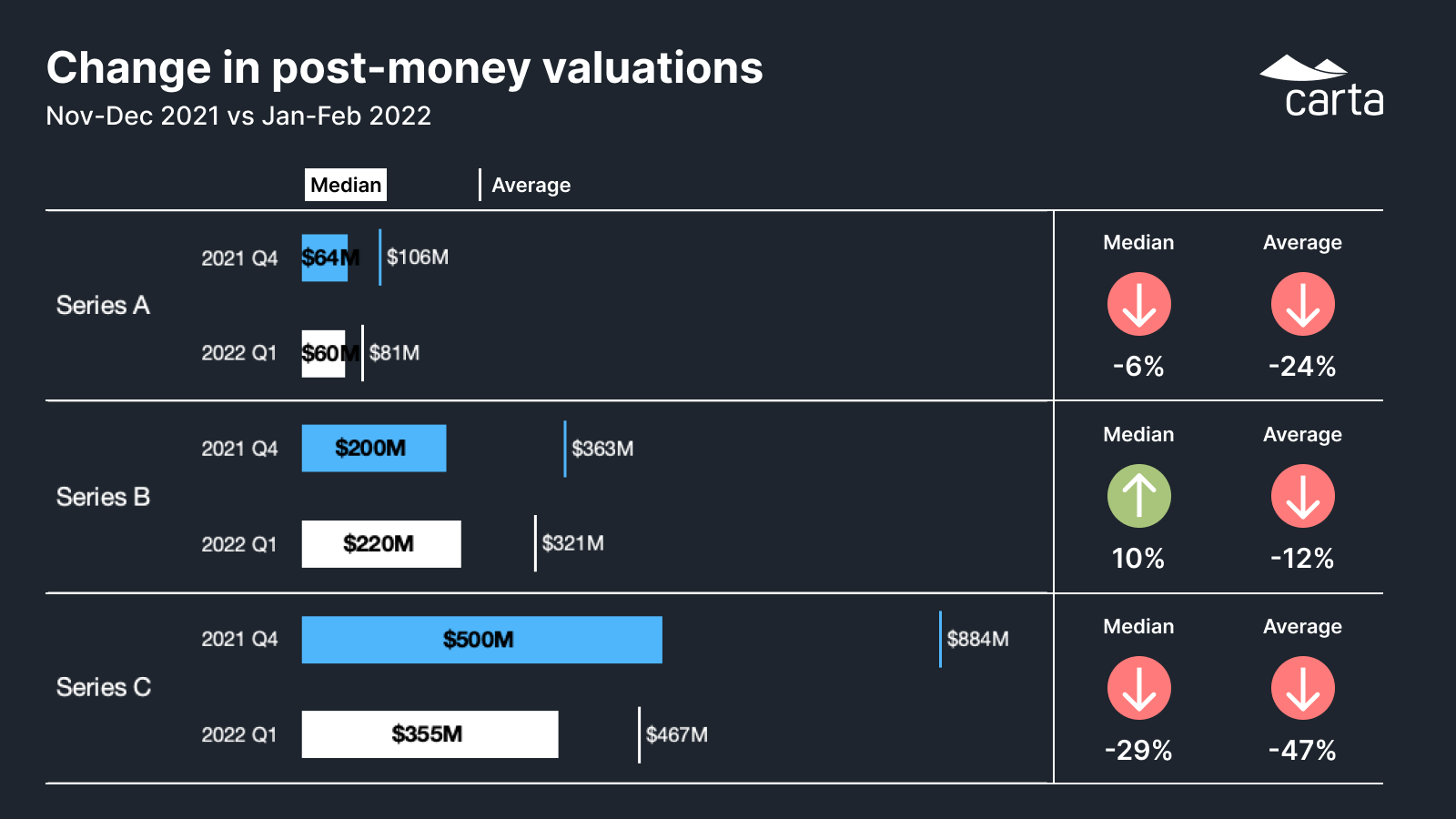The venture capital market is retreating somewhat from its aggressive 2021 pace, new data indicates.
According to data collected by Carta, a unicorn startup that provides equity management and other services to private companies, round sizes from the Series A to C stages in the United States are in decline, while valuations attached to those deals are also falling. For investors hunting for a deal, the pricing reprieve may be welcome. For founders hunting up their next capital tranche, the news could prove less desirable.
The Exchange explores startups, markets and money.
Read it every morning on TechCrunch+ or get The Exchange newsletter every Saturday.
We’re mere weeks away from the conclusion of the first quarter of 2022, which means in short order we’ll get a deluge of data concerning the domestic and global venture capital market’s performance at the start of the year. But while aggregated data is useful for charting larger and slower-moving trends in the startup market, we care more this morning about near-term changes.
 This is for investors putting capital to work now, and startup founders looking to close a new round in short order.
This is for investors putting capital to work now, and startup founders looking to close a new round in short order.
We’re only discussing the U.S. market today, where Carta has the most data and thus the strongest perspective. However, we’ll continue to hunt for data of this sort from the company and its peers as the year progresses. Now, into the data.
How Series A, B, and C rounds are changing in the United States
Let’s start with capital raised per round.
The data here requires very little nuance. Via Carta’s Head of Insights Peter Walker, here you go:

Image Credits: Carta
Note that we’re contrasting the final two months of 2021 with the first two months of 2022, not full quarters. Also, Walker confirmed to TechCrunch in an interview that the above data is based on closing dates, not announcement dates, so we’re not mixing rounds from different periods that would pollute the dataset.
From November and December 2021 to January and February 2022, Series A rounds posted the largest average decline in round size in the United States. This indicates that outlier Series A rounds — in size terms — are becoming less frequent. That the median Series A round also declined likely stems from similar reasons, even if it does belie a less extreme decline than what averaged results detail. Still, Series A rounds on both a median and average basis in the starting months of 2022 remain over the $10 million mark. Slowdown or not, the market is still hot.
Series B round data is similar, with a sharper average decline than median round-size shift. An even smaller median decline, however, than we saw with Series A rounds means that the Series B market is changing, but not as much for most companies raising. Series C data is more extreme, with round sizes falling more sharply in median terms than average, implying that outlier rounds at the venture stage are changing, but that we’re seeing more movement among smaller deals than with Series A and B rounds.
Turning to valuations, the data here is similar, with one particular caveat. From the same source:

Image Credits: Carta
Median Series A valuations ticked down to $60 million from $64 million in the opening months of 2022, with average valuations for the stage dropping from $106 million to a far more modest $81 million. As expected from our above notes, outlier rounds that skew the Series A stage appear to be in decline.
Series C data is similar, if more extreme. Average valuations for Series C investments in the United States startup market fell sharply at the start of 2022, with median valuations also taking a firm whacking. From a near-unicorn average valuation of $884 million, the average Series C in the first two months of the year was valued at a far lower $467 million. That’s a huge change, one that backs up our general grousing about the changing public markets and how those price shifts should impact startup valuations, especially among companies that are on a clear path toward an exit.
It’s the Series B data in this second chart that’s the most fascinating. As expected, average round valuations for the stage dipped. However, on a median basis, round valuations went up? Not by much — just $20 million from a $200 million base — but perhaps we’re seeing more late-stage capital crowd the Series B market, boosting median results? That average round valuations are in decline for Series B startups seems to cut back against that idea, so it’s hard to parse precisely what the median bump means.
Still, seeing a single green data point amid all the splotches of red doesn’t mean that the market for startup investment isn’t getting more conservative in dollar and valuation terms. Instead, it indicates that there is still strong sentiment in parts of the market, changes aside. Naturally, we’ll collect more data from Carta when the quarter ends, but the above is a good marker in time for how much things have changed for startups — at least domestically — in a very short period of time.
(I’ll be chatting about this and other topics during Carta’s Twitter Spaces conversation today at 3 p.m. ET. Set your reminder here.)
